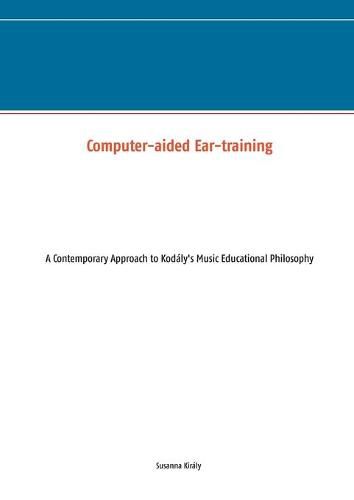Readings Newsletter
Become a Readings Member to make your shopping experience even easier.
Sign in or sign up for free!
You’re not far away from qualifying for FREE standard shipping within Australia
You’ve qualified for FREE standard shipping within Australia
The cart is loading…






This title is printed to order. This book may have been self-published. If so, we cannot guarantee the quality of the content. In the main most books will have gone through the editing process however some may not. We therefore suggest that you be aware of this before ordering this book. If in doubt check either the author or publisher’s details as we are unable to accept any returns unless they are faulty. Please contact us if you have any questions.
My doctoral thesis has involved two related tasks. The first was to analyse Zoltan Kodaly’s philosophy of music education and, on this basis, to develop a computer-assisted instruction method (CAI) for teaching music theory and solfege (ear-training). The second task was to experiment with the effectiveness of this method and compare it with traditional approaches to teaching. Many student find music theory and ear training difficult. During the 1990s, in connection with my licentiate thesis Solfege in the Computer Classroom (2000), I initiated this research project, and developed a CAI method for teaching music theory and solfege. I wanted to see just how useful Kodaly’s approach could be in computer-aided teaching and learning. The results show that the Kodaly approach can be successfully applied to the development of a computer-aided solfege programme and the Kodaly system is applicable to new learning environments and teaching practices. In music education CAI is an area with great potential for development. It offers multiple learning options and can enhance students’ motivation to study music theory and ear-training; some of the learning outcomes were even better than with the traditional ways of learning. The results also show, however, that the teacher-pupil interaction is essential in a computer-aided learning programme.
$9.00 standard shipping within Australia
FREE standard shipping within Australia for orders over $100.00
Express & International shipping calculated at checkout
This title is printed to order. This book may have been self-published. If so, we cannot guarantee the quality of the content. In the main most books will have gone through the editing process however some may not. We therefore suggest that you be aware of this before ordering this book. If in doubt check either the author or publisher’s details as we are unable to accept any returns unless they are faulty. Please contact us if you have any questions.
My doctoral thesis has involved two related tasks. The first was to analyse Zoltan Kodaly’s philosophy of music education and, on this basis, to develop a computer-assisted instruction method (CAI) for teaching music theory and solfege (ear-training). The second task was to experiment with the effectiveness of this method and compare it with traditional approaches to teaching. Many student find music theory and ear training difficult. During the 1990s, in connection with my licentiate thesis Solfege in the Computer Classroom (2000), I initiated this research project, and developed a CAI method for teaching music theory and solfege. I wanted to see just how useful Kodaly’s approach could be in computer-aided teaching and learning. The results show that the Kodaly approach can be successfully applied to the development of a computer-aided solfege programme and the Kodaly system is applicable to new learning environments and teaching practices. In music education CAI is an area with great potential for development. It offers multiple learning options and can enhance students’ motivation to study music theory and ear-training; some of the learning outcomes were even better than with the traditional ways of learning. The results also show, however, that the teacher-pupil interaction is essential in a computer-aided learning programme.